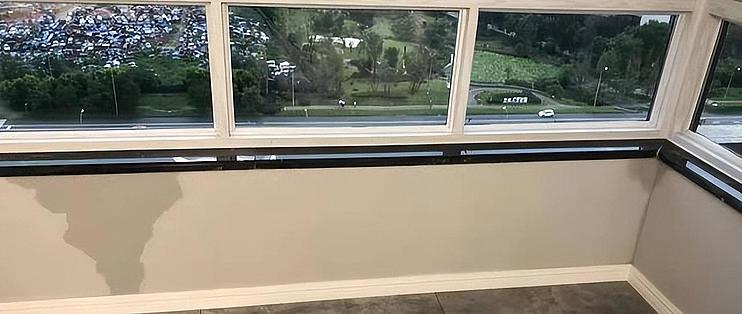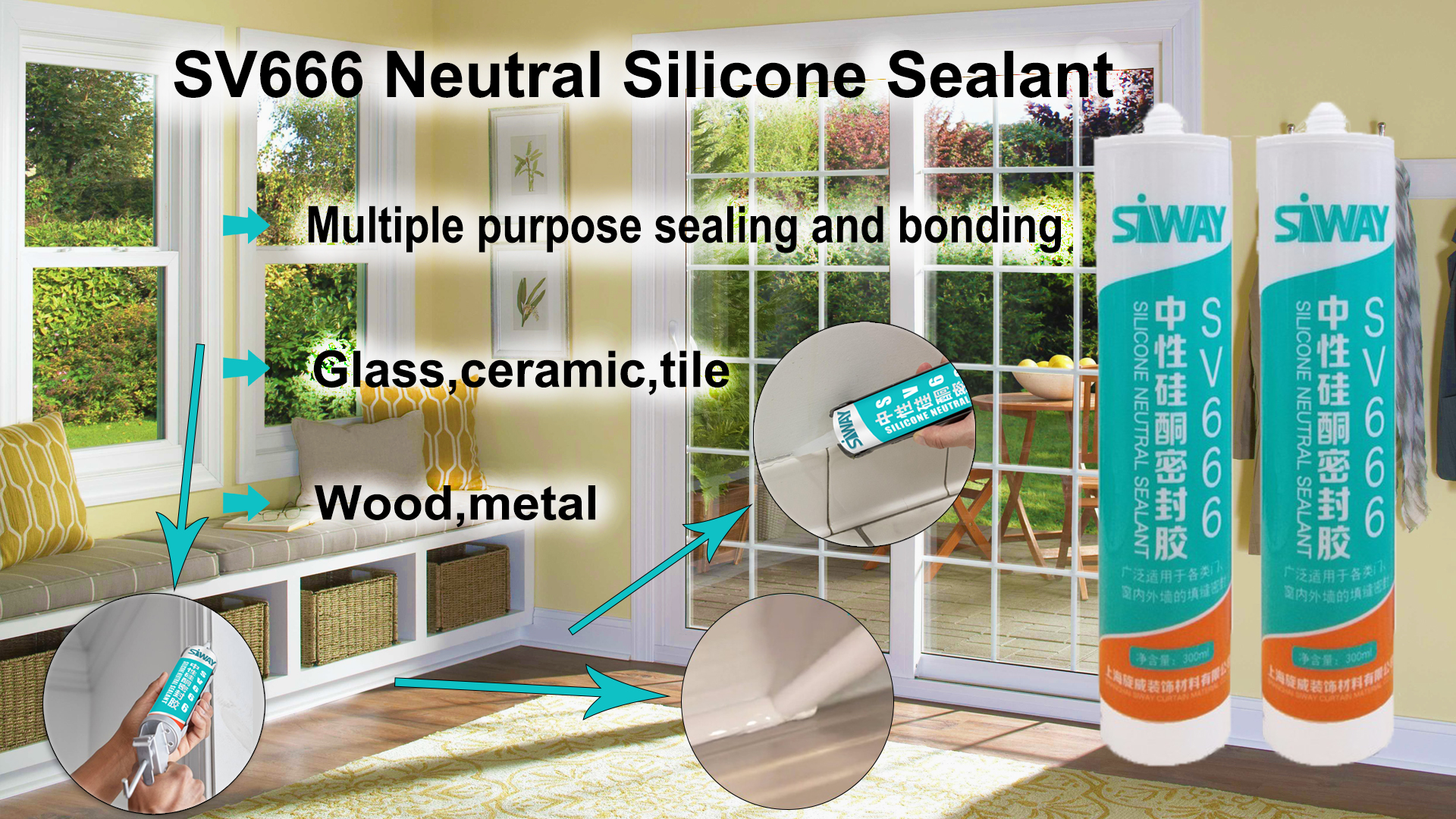Are there gaps in the doors and windows at home? Are they leaking wind and rain?
Are the doors and windows at home soundproofed?
Eating supper on the street, you listen to live broadcasts at home.
Has the glue on the doors and windows at home become hard?
A fingernail mark is left when you tap it?
Has the glue on the doors and windows at home cracked?
It rains heavily outside, but lightly inside?
Has the glue on the doors and windows at home changed color?
Black turns gray, coffee turns khaki, affecting the appearance

All of these are related to door and window sealants!
The main application of door and window sealants is the sealing between doors and windows and glass, and the sealing of window frames and wall caulking. When there is a problem with the door and window sealants, the insulation, heat insulation, sound insulation, waterproofing and other functions of the doors and windows will be lost, and a series of situations listed above will occur.
When it comes to door and window sealants, many people think of: What? Isn't that glass sealants? Yes, it is the glass sealants that appears most frequently in our mouths. But it is not just glass sealants.
Popular Science Moment
Q: Why is it called glass sealant?
A: Because the silicone sealant developed in the early stage is acidic and can only be used to hit glass, so everyone calls it glass sealant by convention. Ordinary consumers know little about glue, so everyone starts to call it glass sealant.
Q: Why is it not just glass sealant?
A: Because now with the rapid development of the silicone rubber industry, sealants are not just acidic sealants, but also a new batch of neutral silicone sealants have emerged. We use it on doors and windows, and it is called silicone door and window glue.
Acidic glass sealant is mostly used for waterproofing and sealing. Its disadvantage is that it has a certain degree of corrosiveness, so the materials that can be used are limited. In addition, the general lifespan is 2 to 3 years, and it is easy to become brittle after that; neutral glass sealant has a wide range of applications, is non-corrosive, and is durable. Its disadvantage is that it cures a little slower. The specific choice of sealant should be determined based on actual conditions.
Q: Is the door and window sealant weather-resistant?
A: The types of sealants used on doors and windows include: silicone sealant, polyurethane sealant, water-based sealant and silane-modified polyether sealant, among which silicone sealant is preferred. Silicone sealant has the best weather resistance, and its main chain chemical bond energy is higher than the energy of 300nm ultraviolet light, which is why silicone sealant can maintain good performance under ultraviolet light for a long time.
Take siway 666 high-performance environmentally friendly neutral silicone sealant as an example. First of all, it is a neutral silicone sealant, so its weather resistance itself is very good. Therefore, regardless of whether the name is marked as weather-resistant sealant, the weather resistance of silicone sealant cannot be questioned.

How to choose door and window sealant
Sealant only accounts for 1~3% of the total cost of energy-saving doors and windows, but its quality directly affects the quality and energy-saving effect of the entire project, and also directly affects our living experience. People usually pay more attention to "big items" such as glass and profiles, and ignore the small material of sealant. Little do people know that door and window sealant is a key material. The energy loss caused by the failure of door and window sealing is far greater than the energy saving that can be achieved by choosing better glass and profiles. Talking about energy saving and environmental protection in a building that leaks air and rain is tantamount to empty talk.

Weather-resistant and waterproof sealing of doors and windows is a systematic project, just like curtain walls, including the sealing between window frames and glass, the sealing between exterior walls and door and window frames, etc. In summer, the sunshine is strong and extreme weather such as typhoons and rainstorms are prone to occur. It is a high-incidence period for door and window problems. What issues should we pay attention to when choosing and using silicone sealants for doors and windows?
1. Choose regular products that meet national standards
GB/T 8478-2020 "Aluminum Alloy Doors and Windows" puts forward requirements for sealing and bonding materials for aluminum alloy doors and windows. In addition, GB/T 14683-2017 "Silicone and Modified Silicone Building Sealant", JC/T 881-2017 "Sealant for Concrete Joints", JC/T 485-2007 "Elastic Sealant for Building Windows" and other standards also set corresponding indicators for sealants for building doors and windows.
2. Choose a trustworthy big brand
The door and window glue market is mixed, with regular brands and copycat brands emerging in an endless stream, and there are also counterfeit products. Choose a regular big brand with technical strength to carry out product performance research, strictly control raw materials and production processes, and products can only be shipped after layers of inspection, so that the quality is guaranteed.
3. Pay attention to the environmental performance of the product
In terms of the volatility, VOC content, heavy metals, etc. of the sealant, it is difficult for consumers to see any clues from the product with their naked eyes. It is recommended to pay attention to the environmental protection qualifications of the product manufacturer, such as whether it has passed the ISO9001 quality management system, ISO14001 environmental management system, ISO45001 occupational health and safety management system, and whether it has an authoritative third-party environmental protection qualification certification.
4. Correct construction
Silicone sealant is greatly affected by the environment (temperature and humidity). The general use environment requires that it should be used in a clean environment with a temperature of 5~40℃ and a relative humidity of 40%~80%. Therefore, it is not recommended to apply glue in an environment beyond the above range.
In addition, it is necessary to pay attention to the clean and dry surface of the doors and windows to be constructed. In summer, the temperature and humidity are high, and attention should be paid to applying glue as soon as possible (if primer is required, apply glue as soon as possible after applying primer), and trimming should be done immediately after completion. After that, it should be cured for more than 12 hours under static and unstressed conditions according to the curing conditions of different products.
5. Correct storage
High temperature and high humidity weather will significantly shorten the storage period of the product and cause the product to fail prematurely. Therefore, it is recommended to use the sealant as soon as possible after opening in summer. In summer, it is humid and rainy. It should be noted that the sealant should be stored in a ventilated and cool place with relatively high terrain to prevent the sealant from being exposed to rain or even water immersion caused by extreme weather, which will affect the shelf life of the product and cause curing problems in the product packaging.
Many users have poor sealing performance of doors and windows at home, and the first thought is to replace the doors and windows - now we know that this is actually unnecessary. First, carefully check whether the door and window glue has cracked, hardened, or has poor sealing performance. If the problem lies with the sealant, then you only need to replace it with high-quality silicone sealant with guaranteed quality.

Post time: Aug-07-2024

